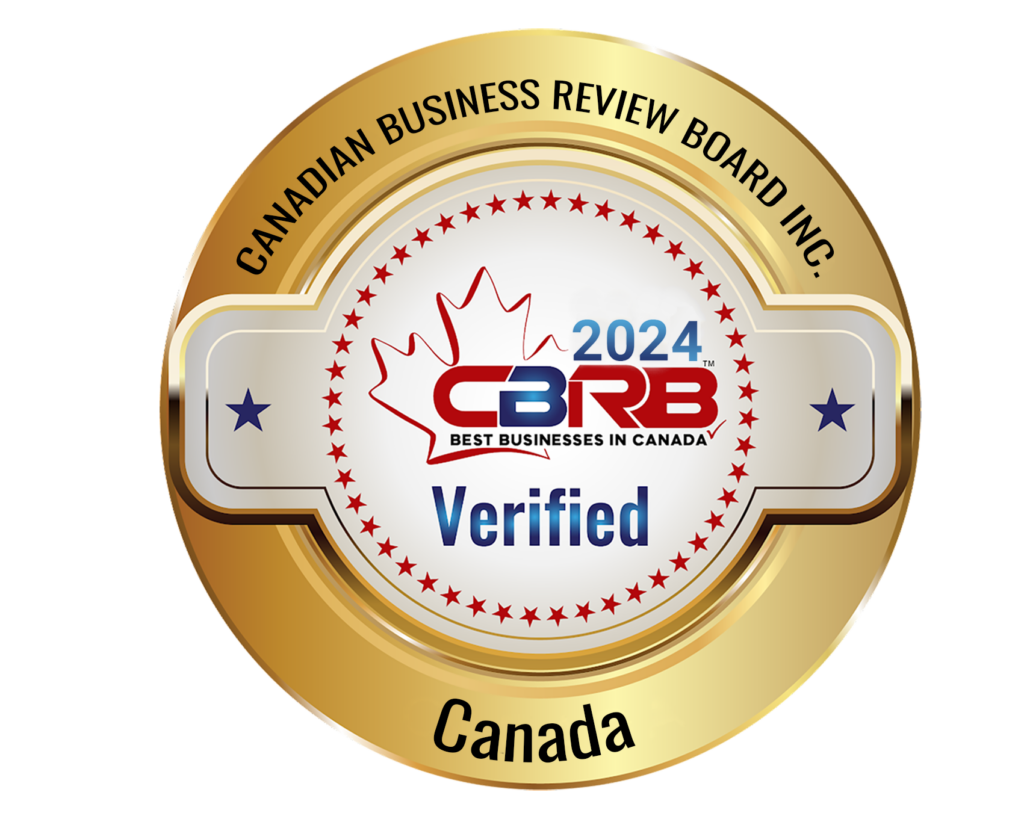Why Healthcare Practices Need Expert Guidance
Medical and Healthcare practices are complex and highly regulated entities that require expert guidance to navigate successfully. From compliance with constantly changing laws and regulations to optimizing revenue cycle management and improving patient outcomes, Challenges such as managing insurance reimbursements, implementing electronic health records, and recruiting specialized healthcare professionals are just a few examples of the complex and ever-evolving challenges healthcare practices encounter. In order to thrive in today’s competitive healthcare landscape, practices must rely on the expertise of professionals who understand the intricacies of the industry and can provide strategic guidance tailored to their specific needs.
- Challenges in starting, managing, or growing a healthcare or medical practice. From securing initial funding and navigating credentialing processes to developing referral networks and ensuring regulatory compliance, starting, managing, or growing a healthcare practice presents a myriad of challenges. Additionally, staying abreast of the latest advancements in technology and healthcare delivery models is essential to remaining competitive in the ever-changing healthcare industry. Without proper planning and guidance, healthcare practices may struggle to achieve their goals and provide high-quality care to their patients.
- Importance of partnering with experts who understand the intricacies of regulatory compliance, financial management, team building, and technology adoption.We , at Dana PharMed help healthcare practices navigate the complex landscape of the industry and develop tailored solutions to address their specific needs and challenges. By leveraging our expertise and experience, healthcare practice can streamline operations, enhance patient and client outcomes, and achieve sustainable growth. Furthermore, these partnerships can also help healthcare practice adapt to the evolving healthcare landscape, ensuring they remain at the forefront of innovation and best practices. Ultimately, investing in the right partnerships and resources can position healthcare practices for long-term success and enable them to thrive in a competitive market.
2. The Dream Practice: Defining Your Vision
When envisioning your dream healthcare practice, it is essential to define your vision and set clear goals for what you want to achieve. This process involves identifying your values, mission, and objectives, as well as understanding the unique qualities that set your practice apart from others. By articulating your vision, you can create a roadmap for success and guide your decision-making process. Additionally, having a clear vision can inspire and motivate your team, aligning everyone towards a common purpose and driving towards shared goals.
- Dana PharMed helps your practice define goals and establish a clear vision for success. We assist Healthcare practices in defining specific short-term and long-term goals, articulating a compelling mission statement, and establishing a clear vision for success through our comprehensive consulting services. Our team of experienced agile consultants works closely with practice owners and key stakeholders to assess the current state of the practice, identify areas for improvement, and develop a customized strategic plan. We facilitate strategic planning sessions, conduct market research, and provide expert guidance on setting measurable objectives and creating actionable steps to achieve them. Through this collaborative process, we empower practices to clarify their vision, align their team, and drive towards sustainable growth and success.
- The significance of combining clinical expertise with business knowledge. For instance, effectively managing client and patient flow to optimize scheduling efficiency, implementing cost-effective inventory management systems, and developing patient-centered marketing strategies are key aspects of aligning clinical excellence with business acumen. While providing top-quality client and patient care is the core mission, without sound business strategies, even the most clinically advanced practices can struggle to thrive. For example, a clinic that excels in offering cutting-edge treatments but lacks proper financial management may face budget constraints, limiting its ability to invest in new technologies or hire skilled staff. Similarly, a practice with no clear operational framework might face inefficiencies in patient scheduling or billing, causing longer wait times, patient dissatisfaction, or revenue loss. Effective business acumen ensures the practice runs smoothly, allowing healthcare professionals to focus on delivering exceptional care while maintaining a profitable, well-organized practice. When clinical expertise is paired with strategic business planning—covering areas like financial oversight, marketing, patient experience, and compliance—it drives growth, fosters innovation, and ensures long-term stability in an increasingly competitive healthcare environment.
3. Agile Strategic Planning: Why Build a Healthcare Practice?
Strategic planning enables healthcare practices to identify new service opportunities, enhance client and patient engagement through telehealth initiatives, and adapt to regulatory changes swiftly, ensuring they remain competitive and sustainable in the dynamic healthcare landscape. By setting clear goals and objectives, healthcare practices can establish a roadmap for success and ensure that they are well-positioned to navigate challenges and capitalize on opportunities. Building a healthcare practice requires careful consideration of factors such as market demand, competition, regulatory requirements, and financial sustainability. By developing a strategic plan, practices can identify their unique value proposition, target client and patient populations, and establish a competitive advantage in the market. Additionally, strategic planning allows practices to align their clinical and business goals, ensuring that they are able to deliver high-quality care while also achieving financial success.
Consider conducting a SWOT analysis to assess the strengths, weaknesses, opportunities, and threats facing the practice. This will help practices identify areas for improvement and potential risks that need to be mitigated. In addition, it is important to involve key stakeholders, such as providers, staff, and patients, in the strategic planning process to ensure buy-in and support for the proposed initiatives. By taking a comprehensive and collaborative approach to strategic planning, practices can position themselves for long-term success and sustainability in an increasingly competitive healthcare landscape. For example, a medical practice may conduct a SWOT analysis and identify that one of their strengths is a strong network of referral sources, but a weakness is outdated technology systems. Involving providers in the planning process can lead to implementing a new electronic health record system to improve efficiency and patient care, ultimately positioning the practice for growth and improved patient outcomes.
Learn about ” The Significance of SWOT and PESTLE Analyses in Agile Business Strategy”
Our team of experienced agile strategy and business management consultants works closely with healthcare organizations to conduct thorough assessments and analyses, identifying opportunities for growth and efficiency in their operations. We leverage data-driven insights and industry best practices to develop tailored strategic plans that align with our clients’ goals and objectives. Through ongoing collaboration and communication, we help our clients navigate challenges, capitalize on opportunities, and drive sustainable growth in a rapidly evolving healthcare environment. Our proven track record of success and commitment to excellence make us a trusted partner for organizations seeking to achieve long-term success and competitive advantage in the healthcare industry.
4. Building the Right Team: Hiring & Training
The key to building a successful healthcare organization lies in hiring and training the right team. By carefully selecting individuals who possess the necessary skills, experience, and values, we can ensure that our team is equipped to deliver high-quality care and services to our clients. Through comprehensive training programs and ongoing professional development, we empower our employees to stay up-to-date on the latest industry trends and best practices, enabling them to provide the best possible support to our clients. Our commitment to building a strong and cohesive team is evident in the positive feedback we receive from both clients and employees alike.
Learn about “Enhancing Workforce Agility in Healthcare: Strategies for a Responsive and Adaptive Team “
5. Financials & Financing: Secure Your Healthcare Practice’s Future
One of the key aspects of ensuring the long-term success of our organization is through careful financial planning and management. We understand the importance of being financially stable and secure in order to continue providing top-notch care and services to our clients. That is why we offer resources and support to help our employees understand the financials of our organization and how they can contribute to its success. Additionally, we provide guidance on financing options for those looking to start their own practice or expand their current one. By taking a proactive approach to financial planning, we can secure the future of our practice and continue to thrive in the ever-changing healthcare industry. Our goal is to empower our employees to make informed decisions about their finances, both personally and within the organization. We believe that by equipping them with the necessary knowledge and tools, we can build a strong and sustainable financial foundation for our practice. Through open communication and collaboration, we can work together to ensure the long-term success of our business and the well-being of our clients. Together, we can navigate the complexities of the healthcare industry and emerge stronger than ever before.
By carefully examining your funding sources and allocating resources efficiently, we can ensure that your practice remains financially stable and able to provide the highest quality care to your clients and patients. Budgeting allows you to track your expenses and make informed decisions about where to allocate funds to achieve your goals. Financial forecasting helps you anticipate future financial needs and plan accordingly, allowing you to adapt to changing circumstances and ensure our long-term success. By focusing on these critical aspects of financial planning, you can continue to grow and thrive in the ever-evolving healthcare industry.
Additionally, staying informed about industry trends and regulations can help you stay ahead of the curve and provide the best possible care to your clients. By regularly reviewing your financial performance and making adjustments as needed, you can ensure that your healthcare practice remains financially stable and sustainable in the long run. It is also important to establish strong relationships with lenders and other financial partners to secure the funding necessary for growth and expansion. Overall, a comprehensive financial strategy is essential for success in the healthcare industry, and by prioritizing these key areas, you can set your healthcare practice up for continued success and growth.
6. Site Selection & Demographics: Finding the Ideal Location
Selecting the right location for your healthcare practice is essential for attracting and retaining clients. Conducting comprehensive research on demographics, competition, and market trends is crucial. Consider factors such as population density, income levels, and proximity to other healthcare facilities when choosing a site. For instance, a pediatrician might choose a location near schools and family-friendly neighborhoods with high population densities to align with their target patient base. Additionally, evaluate accessibility and visibility—ample parking and ease of access are key for families with young children. By selecting a site that aligns with your patient population and business goals, you can enhance patient experience and position your practice for growth and profitability.
Understanding local demographics and competition is vital for tailoring your services to meet community needs and stand out from competitors. For example, an area with a high percentage of elderly residents may require more geriatric care services, while neighborhoods with many young families might benefit from pediatric and maternal health offerings. By analyzing demographic data and the competitive landscape, healthcare providers can identify service gaps and create a unique value proposition. Strategic site selection, informed by these insights, ensures that your practice meets patient needs effectively and capitalizes on local opportunities, ultimately contributing to long-term success and sustainability.
7. Office Design: Creating a Patient-Centered Environment
When considering office design, healthcare practices should prioritize creating a patient-centered environment that promotes comfort, safety, and efficiency. This includes designing waiting areas that are welcoming and calming, implementing clear signage for easy navigation, and incorporating technology to streamline the check-in process. Furthermore, the layout of exam rooms and treatment areas should be optimized for privacy and accessibility, ensuring that patients feel respected and well-cared for during their visit. By focusing on the patient experience in every aspect of office design, healthcare practices can foster trust, loyalty, and positive outcomes for both patients and providers.
A modern and efficient office design is crucial in creating a welcoming and functional space that enhances the overall patient experience. By incorporating elements such as comfortable seating, natural lighting, and soothing color schemes, healthcare practices can create a calming environment that promotes relaxation and reduces anxiety. Additionally, efficient office layouts and streamlined workflows can help to minimize wait times and improve the overall efficiency of patient care. By prioritizing the design of the office space, healthcare practices can create a positive and memorable experience for patients, ultimately leading to increased satisfaction and loyalty.
At Dana PharMed, we work closely with practices to optimize their physical spaces in order to enhance both patient experience and operational efficiency. By conducting thorough assessments of the current layout and workflow processes. We are able to identify areas for improvement and develop tailored design solutions. Whether it be reconfiguring waiting areas to reduce congestion or implementing technology to streamline administrative tasks, my goal is to create a seamless and welcoming environment for both patients and staff. Through thoughtful planning and attention to detail, we help healthcare practices achieve their goals of providing high-quality care in a comfortable and efficient setting.
8. Navigating Complexity of Regulatory Requirements
Navigating regulatory requirements is a critical component of designing and operating a healthcare facility. Ensuring compliance with a multitude of regulations—ranging from building codes to infection control protocols—is essential for creating a safe and effective environment for both patients and staff. At Dana PharMed, we partner with clients to adeptly manage these requirements, staying informed about the latest regulations and conducting thorough research to address any potential issues. Our proactive approach involves close collaboration with regulatory agencies, ensuring that all standards are met while fostering an environment that supports the health and well-being of everyone involved.
Dana PharMed excels in guiding healthcare practices through the complex landscape of regulatory compliance, facilitating smooth and timely approvals for their operations. Our team of regulatory experts is dedicated to staying ahead of evolving local, national, and international laws, providing actionable insights into new and updated regulations. We support practices by offering comprehensive audits and ongoing assistance to navigate licensing requirements, privacy laws, and best practices. This meticulous approach helps practices avoid costly delays and maintain efficient operations, allowing them to focus on delivering high-quality patient care while ensuring continuous compliance and safety.
9.High-Performance Operations : Operational efficiency involves implementing best practices in workflow, patient management, and service delivery.
Streamlining workflow and maximizing efficiency are fundamental to high-performance operations in healthcare practices. Implementing cutting-edge technology and automation solutions plays a crucial role in optimizing processes and alleviating administrative burdens. By conducting thorough assessments, practices can identify and address inefficiencies, tailoring solutions to their specific needs. Continuous monitoring and data analysis enable real-time adjustments to improve performance metrics, ensuring that resources are utilized effectively. Technologies such as electronic health records (EHR) systems, telemedicine platforms, and automated appointment scheduling tools are key in enhancing productivity, reducing manual tasks, and improving patient outcomes. These tools help practices manage their operations more efficiently, allowing them to focus on delivering high-quality care while maintaining profitability and compliance with regulatory requirements.
Effective operational management involves more than just technology; it also requires optimizing processes and communication. Analyzing current workflows to identify bottlenecks and areas for improvement is essential. Implementing best practices in patient management, scheduling, and service delivery enhances overall efficiency and resource utilization. By improving these areas, healthcare practices can not only provide better patient care but also achieve sustainable growth and operational excellence. Prioritizing these strategies helps practices adapt to the competitive healthcare landscape, ensuring they meet patient needs effectively and maintain a high standard of service.
10. Equipment & Supplies: Setting Up for Success
When setting up a successful medical and healthcare practice, equipping your facility with the right tools and supplies is crucial. Essential items range from examination tables and diagnostic instruments to office supplies and cleaning products. Investing in high-quality equipment, such as advanced imaging devices or ergonomic examination tables, not only enhances patient care but also fosters a professional and welcoming environment. Ensuring that you have necessary supplies on hand, like sterile instruments and durable office furniture, can prevent delays and maintain smooth operations.
For both new and expanding medical and healthcare practices, it is important to align your equipment and supply choices with the specific needs of your clients and patients and the services you provide. Researching the latest technologies and seeking recommendations from industry peers can guide your decisions. Prioritizing factors such as quality, durability, and ease of use can significantly improve patient outcomes and practice efficiency. Additionally, staying informed about industry trends through conferences and professional networks allows you to make well-informed choices and negotiate effectively with vendors. This approach ensures you secure cost-effective deals while maintaining high standards of care and operational success.
11. Marketing & Branding: Importance of marketing in healthcare
Building a strong presence in the healthcare industry requires a well-rounded agile marketing and branding strategy to attract new patients, build trust with existing ones, and stand out from competitors. A strategic approach involves both digital and traditional marketing efforts.
Digital Marketing is essential for reaching a broader audience and enhancing online visibility. Effective strategies include:
- Social Media: Engage with patients through platforms like Facebook, Instagram, and LinkedIn. Share valuable content, such as health tips, patient success stories, and updates about your practice. Regularly interact with followers to build relationships and respond to inquiries.
- Email Campaigns: Send targeted emails with useful information, appointment reminders, and promotional offers. Personalize content based on patient interests and behavior to increase engagement and retention.
- Search Engine Optimization (SEO): Optimize your website with relevant keywords, high-quality content, and local SEO practices to improve search engine rankings and attract more traffic to your site.
Traditional Marketing strategies complement digital efforts and enhance local visibility. Key actions include:
- Community Outreach: Participate in local health fairs, collaborate with community organizations, and sponsor events to build connections and trust within the community.
- Patient Engagement: Implement feedback surveys, loyalty programs, and personalized communication to foster long-term relationships with patients and encourage repeat visits.
- Brand Consistency: Ensure that your branding is consistent across all platforms and materials, from your website and social media profiles to physical signage and patient brochures.
By integrating these digital and traditional marketing strategies, healthcare practices can effectively increase their reach, improve patient engagement, and drive growth. Investing in a comprehensive marketing approach helps position your practice as a trusted and reputable provider, attracting and retaining patients while distinguishing yourself from competitors.
12. Grand Opening & Beyond: Launching Your Practice
A successful grand opening marks the beginning of a thriving healthcare practice, but establishing long-term success requires continuous effort in building relationships with both patients and the community. Beyond the initial launch, it’s essential to maintain ongoing marketing activities to keep patients informed and engaged. This includes leveraging digital strategies such as social media campaigns and email newsletters, which help in regularly updating patients on new services, health tips, and practice news. Consistently providing exceptional patient care and actively seeking feedback are crucial for continuous improvement and patient retention.
When planning a grand opening, creating a strong community presence is key. Organize an open house event, seek local media coverage, and partner with neighboring businesses or organizations to maximize exposure. Engaging the community through these activities can help attract potential patients from the outset. Additionally, offering special promotions or discounts during the grand opening can incentivize visits and showcase the quality of care your practice provides.
These initial marketing efforts not only generate immediate traffic but also help establish lasting relationships with patients. Demonstrating a commitment to superior care and customer service fosters loyalty and encourages ongoing patronage. Utilizing both traditional marketing and digital platforms ensures that your practice reaches a broad audience, including those who may not have been previously aware of your services. By staying engaged with the community and adapting to the evolving healthcare landscape, you can secure the long-term success and sustainability of your practice.
13. Conclusion: Partner with Experts for Lasting Success
In conclusion, collaborating with experts in agile strategy, marketing, and business management, specifically those with a background in healthcare, can be pivotal for running a successful practice. These professionals offer invaluable insights and guidance on engaging effectively with patients, enhancing service offerings, and staying ahead of industry trends. By leveraging their expertise, healthcare providers can navigate challenges, drive growth, and achieve sustained success.
Our team at Dana PharMed is dedicated to supporting your practice through every stage of its development. We specialize in creating and executing impactful branding strategies that differentiate your practice in a competitive market. From orchestrating a successful grand opening to providing ongoing consulting and strategic advice, we are committed to your long-term success. Partner with us to build a resilient brand, attract and retain loyal patients, and thrive in the dynamic healthcare industry. Let us help you transform your vision into a thriving reality.









